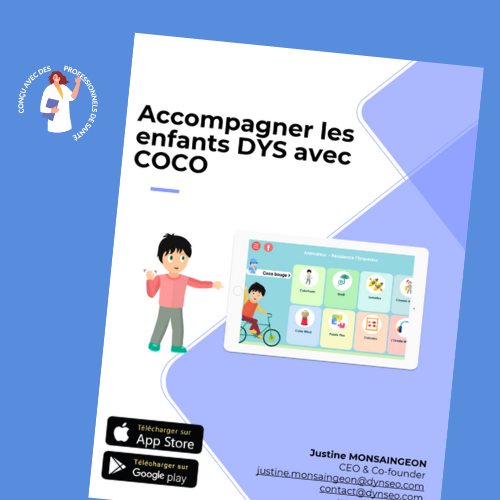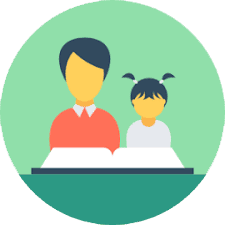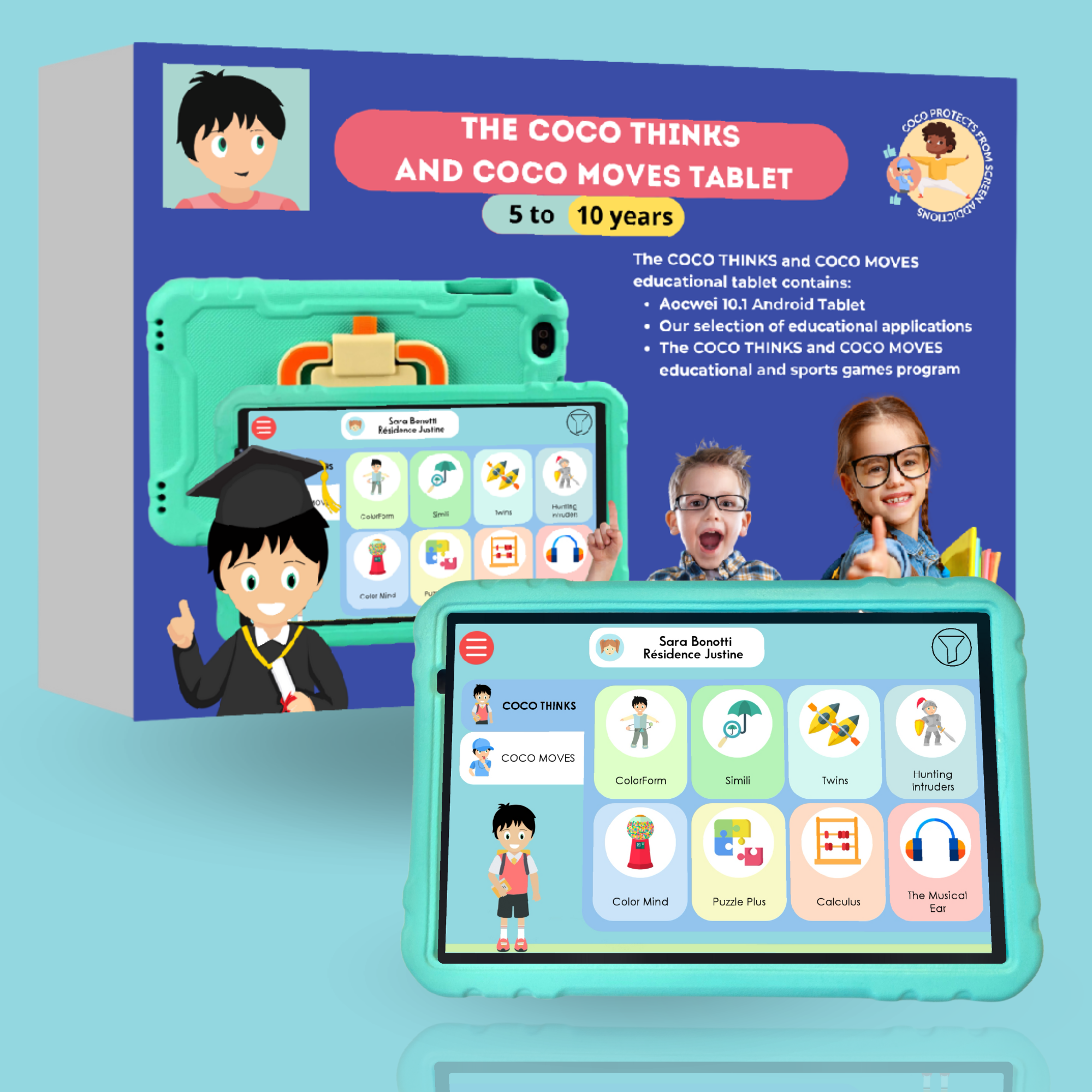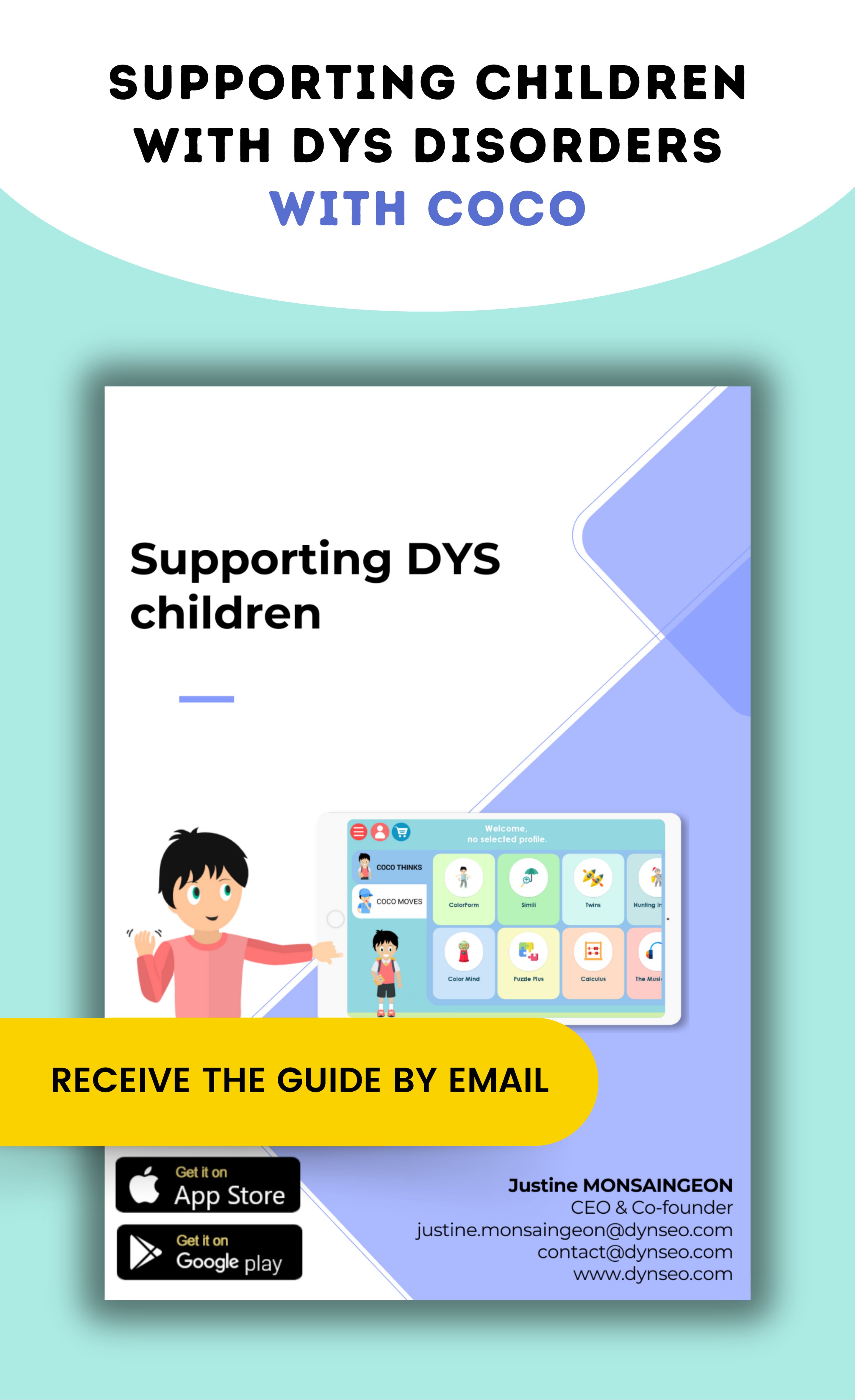In addition to decoding problems, dyslexic children also have comprehension difficulties. They may read a text correctly, but not understand its meaning. This may be due to their difficulty in making connections between words and following the narrative structure of a story. Dyslexic children may also have difficulty remembering information they have read, making it difficult to understand and retain content.
The impact of dyslexia on learning can be significant. Dyslexic children may have difficulty keeping up with the school curriculum and reaching their full academic potential. They may feel frustrated, discouraged and have low self-esteem because of their reading and writing difficulties. It is therefore essential to find appropriate learning strategies to help these children overcome their difficulties.
How audio books can help dyslexic children
The benefits of audio books for dyslexic children
Audio books offer many advantages for dyslexic children. First of all, they can help improve a child’s self-confidence. By listening to stories and understanding the content, dyslexic children can feel competent and successful in their learning. This can boost their self-esteem and motivation to continue learning.
Audio books can also help stimulate the imagination of dyslexic children. By listening to stories, they can visualize characters, places and events in their minds. This can develop their ability to create mental images and use their imagination creatively.
Finally, audio books can help develop empathy in dyslexic children. By listening to stories about characters different from themselves, they can put themselves in other people’s shoes and understand their emotions and experiences. This can help develop empathy and understanding of others.
Audio books for dyslexic children
When choosing audio books for dyslexic children, it’s important to take certain criteria into account to ensure that they are adapted to their needs. First of all, audiobooks must have clear, distinct voices. Dyslexic children need to hear words pronounced correctly to improve their understanding of text. Narrators must therefore speak slowly and articulate each word clearly.
In addition to clear voices, audio books for dyslexic children can also benefit from illustrations. Images can help reinforce understanding of the text by providing visual clues to the story. Illustrations can also make the listening experience more pleasant and attractive for children.
Finally, audio books for dyslexic children can include sound effects to make the story more immersive. Sounds such as animal noises, character voices or moods can help capture children’s attention and reinforce their engagement with the story.
How to choose the best audio books for dyslexic children
When choosing audio books for dyslexic children, it’s important to take certain criteria into account to ensure that they meet their specific needs. First of all, it’s essential to choose audiobooks with clear, distinct voices. Narrators should speak slowly and articulate each word clearly to facilitate the child’s understanding.
In addition to clear voices, it can be useful to choose audio books with illustrations. Images can help reinforce understanding of the text by providing visual clues to the story. Illustrations can also make the listening experience more pleasant and attractive for children.
It’s also important to choose audio books adapted to the child’s age and interests. Dyslexic children are more likely to engage with a story that matches their interests and developmental level. It can be helpful to consult recommendations from other parents or teachers to find suitable audio books.
How to integrate audio books into learning for dyslexic children

Audiobooks can be integrated into dyslexic children’s learning in a variety of ways to improve comprehension and engagement. First of all, audio books can be used as a reading medium. Dyslexic children can listen to the story while following the written text. This can help them associate sounds with letters and improve their decoding.
As well as being used as a reading aid, audio books can also be used to develop the vocabulary of dyslexic children. Parents and teachers can encourage children to listen to vocabulary-rich stories and discuss words and their meanings. This can help enrich their vocabulary and improve their ability to use precise words when expressing themselves in writing or speaking.
Audio books can also be used to stimulate the imagination of dyslexic children. Parents and teachers can encourage children to create mental images as they listen to a story, and to share their impressions and ideas. This can develop their ability to use their imagination creatively.
Best practices for using audio books with dyslexic children
To get the most out of audiobooks for dyslexic children, it’s important to create an environment conducive to listening. First of all, it’s essential to choose a quiet, distraction-free place where the child can concentrate on the story. Loud noises or interruptions can disturb the child’s attention and make it difficult to understand the text.
It’s also important to encourage children to listen to audio books on a regular basis. Parents and teachers can set a dedicated time for listening to audio books, for example before bedtime or during quiet times of the day. This can help integrate audio books into the child’s daily routine and reinforce their commitment to learning.
To assess the child’s progress, it may be useful to discuss the story with him or her. Parents and teachers can ask questions about the content, ask the child to summarize the story or share his or her impressions. This can help to assess the child’s understanding and identify areas that need special attention.
The results of using audio books in the learning of dyslexic children
Several studies have demonstrated the effectiveness of audio books in helping dyslexic children learn. A study by researchers at the University of California found that dyslexic children who regularly listened to audiobooks improved their text comprehension and vocabulary compared to those who did not. Another study by researchers at Oxford University has shown that audio books can help improve reading fluency and speed in dyslexic children.
Testimonials from parents and teachers also confirm the benefits of audio books for dyslexic children. Many parents have reported that their children are more motivated to read and learn thanks to audio books. Teachers also noted an improvement in children’s comprehension and engagement when using audiobooks in the classroom.
Audio books, a valuable tool for dyslexic children
By incorporating audiobooks into the support of dyslexic children, parents and educators can turn to proven and popular solutions that offer a wide range of adapted content. Here are some concrete examples of platforms and tools that offer beneficial audiobooks for dyslexic children, including recognized services like Audible:
Audiobook platforms
Audible
:- Offers an extensive library of professionally narrated audiobooks, covering a multitude of genres suitable for all ages, including young readers.
- Features such as the ability to change playback speed and mark favorite passages make listening personalized and interactive.
- Learning Ally:
- Specially designed to support people with reading difficulties, including dyslexic children.
- Offers educational and literary audiobooks with easy navigation and text-tracking options to enhance comprehension and engagement.
- Bookshare:
- An online library offering access to adapted books for people who encounter barriers to standard reading.
- Books can be read as audio text, with words underlined as they are read, promoting learning and retention.
Additional applications and tools
- Libby:
- Borrow audio books (and ebooks) free of charge using your local library card.
- Simple, user-friendly interface, ideal for encouraging children to explore and listen to books on their own.
- Epic!:
- A digital library for children aged 12 and under, offering not only audio books but also ebooks, educational videos and quizzes.
- Includes titles with “Read-to-Me”, where the books are narrated to accompany the child’s reading.
Tips for an enriching listening experience
- Create a listening routine: Setting specific times for listening to audio books can help integrate this activity into the child’s daily life, encouraging regularity and commitment.
- Book selection: Involving children in the selection of audio books can increase their interest and motivation. Exploring platform catalogs together can be an exciting and rewarding activity.
- Discussion and interaction: After listening, engage in discussion about the story, the characters, and what they’ve learned. This reinforces comprehension and analysis skills while making the experience more interactive and social.
By taking advantage of these resources, dyslexic children can overcome some of their reading challenges, discovering the pleasure of literature and reinforcing their language skills in an accessible and engaging format.
AND FOR MORE INFORMATION
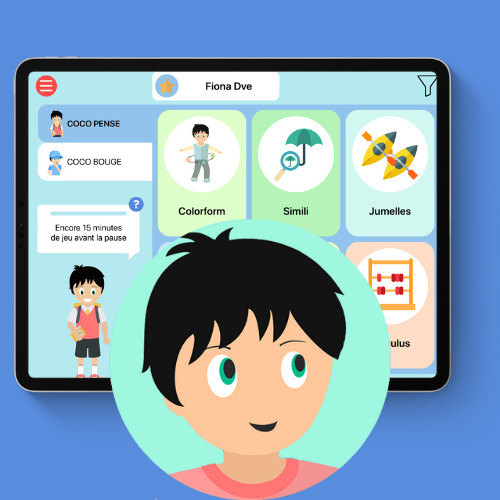
COCO, CHILDREN’S GAMES DYS
Coco pense et Coco bouge is an educational games program for dyslexic, dyspraxic, dysphasic and dyscalculic children aged 5 to 10. A variety of games to work on all cognitive functions. 15 minutes of screen time = 1 sports break
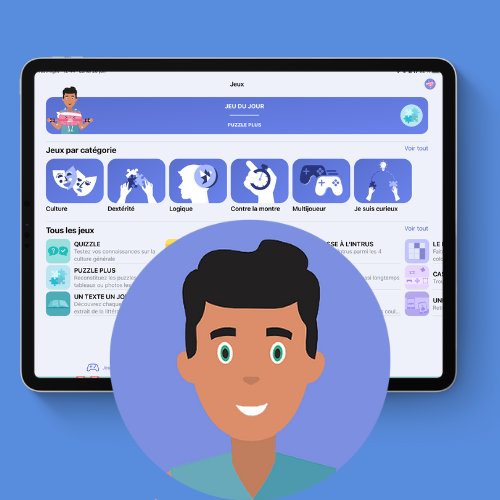
JOE, FOR DYSLEXIC ADULTS
The JOE program, your brain coach, will be able to support dysfunctional teenagers and adults. They can search for games by cognitive function. Joe will also be able to recommend the games best suited to each user’s needs. Smartphone and tablet.

THE MARBLE THAT ROLLS FOR ATTENTION
The Bille qui Roule application is an innovative tool designed to work on attention and concentration through fun games. The tabletop is used as a pendulum to perform the exercises. For example, you have to follow the ball and keep it in a circle, etc.
Other articles that might interest you:
Fine Motor Techniques: Games and Exercises for Children with Dyspraxia.
Dyspraxia, also known as developmental coordination disorder, is a neurological disorder that affects the planning and...
10 Effective Pedagogical Strategies to Support Children with DYS Disorders.
Children with DYS disorders face many challenges in their educational journey. They may have difficulty reading and...
Supporting children with autism
Dynseo proposesSUPPORTING CHILDREN WITH AUTISM with COCO THINKS AND COCO MOVESDynseo and its team are very much...


